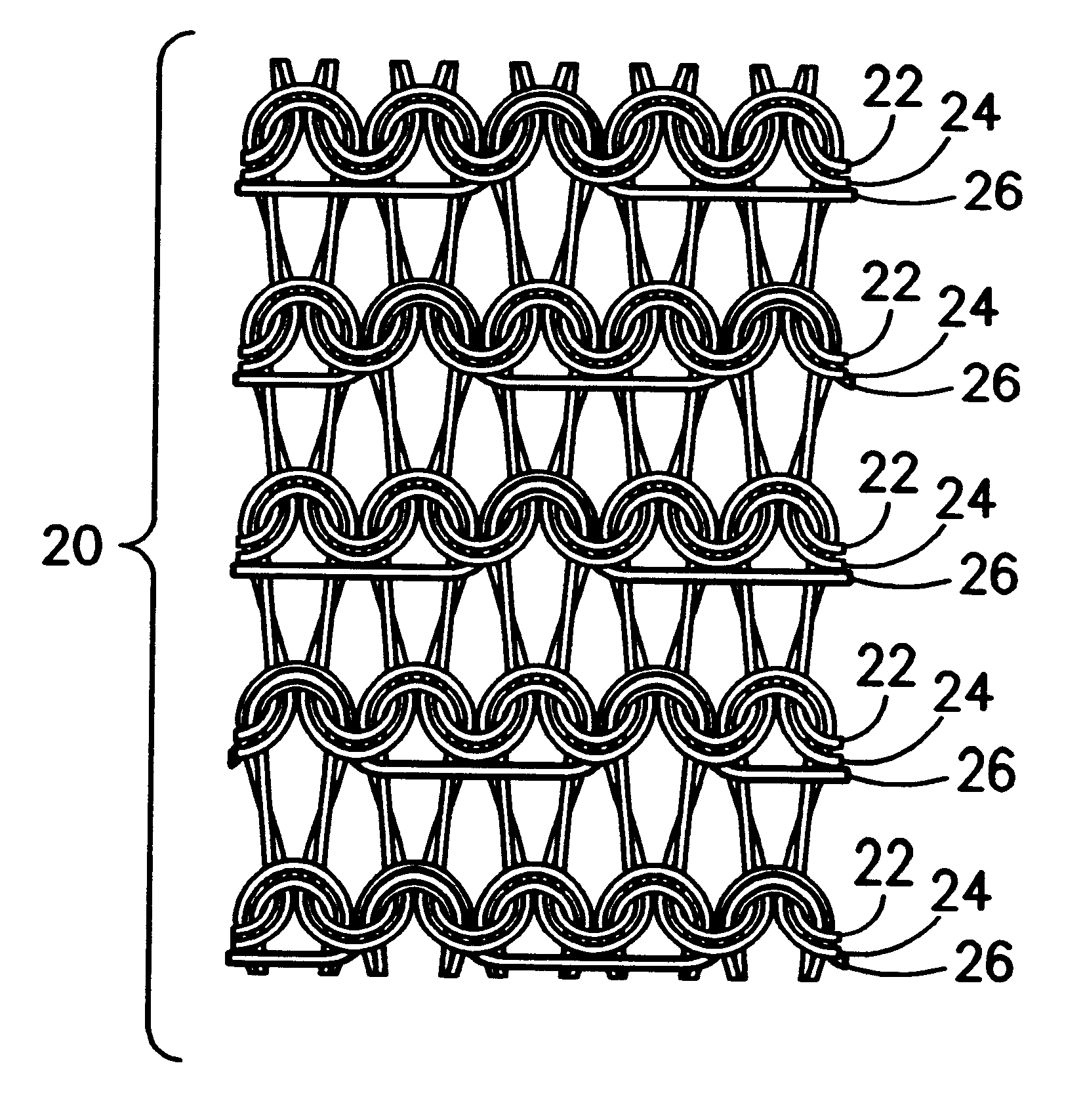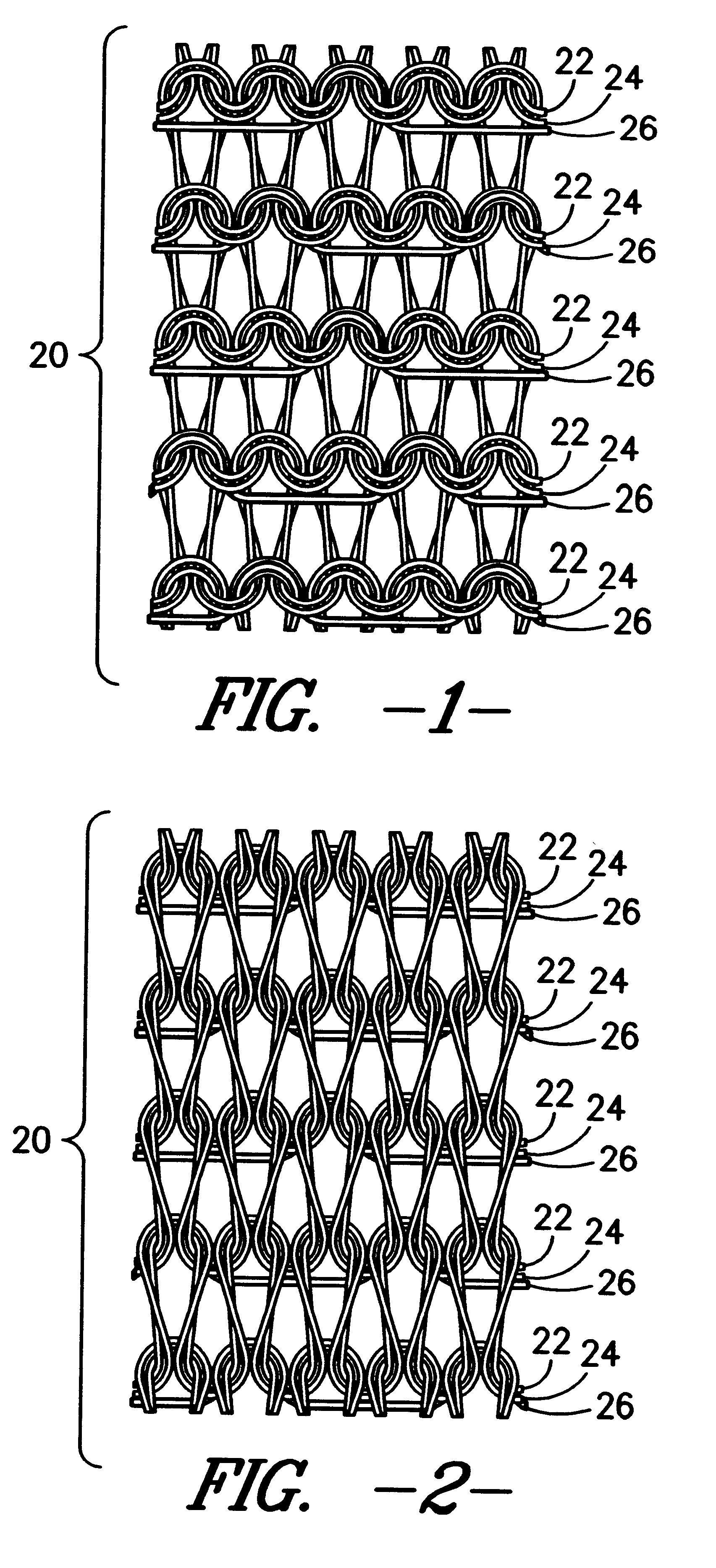Opaque heat-moldable circular knit support fabrics having very high spandex content
a technology of heat-molding and support fabrics, which is applied in the field of opaque heat-moldable circular knit support fabrics having very high spandex content, can solve the problems of inability to find past garment and/or fabric developments, inability to meet the needs of knitting,
- Summary
- Abstract
- Description
- Claims
- Application Information
AI Technical Summary
Benefits of technology
Problems solved by technology
Method used
Image
Examples
Embodiment Construction
It is thus an object of the invention to provide such improved high-density (opaque) heat-moldable support for a wearer's body parts (such as an injured knee joint, a woman's breasts, and the like) within a garment through the utilization of a specific circular knit fabric comprising relatively high amounts of spandex fibers. A further object of the invention is to provide a comfortable, functional support garment made from circular knit fabrics of high spandex content. Another object is to provide a support garment which possesses suitable flexibility for placement on and around a target body part and provides excellent support upon placement at the target location. Still a further object of the invention is to provide a method for producing such a high spandex-content circular knit support garment fabric.
Accordingly, this invention encompasses an opaque heat-moldable circular knit fabric comprising at least two different types of fibers, wherein one type is spandex, wherein said s...
PUM
| Property | Measurement | Unit |
|---|---|---|
| Fraction | aaaaa | aaaaa |
| Fraction | aaaaa | aaaaa |
| Fraction | aaaaa | aaaaa |
Abstract
Description
Claims
Application Information
 Login to View More
Login to View More - R&D
- Intellectual Property
- Life Sciences
- Materials
- Tech Scout
- Unparalleled Data Quality
- Higher Quality Content
- 60% Fewer Hallucinations
Browse by: Latest US Patents, China's latest patents, Technical Efficacy Thesaurus, Application Domain, Technology Topic, Popular Technical Reports.
© 2025 PatSnap. All rights reserved.Legal|Privacy policy|Modern Slavery Act Transparency Statement|Sitemap|About US| Contact US: help@patsnap.com


